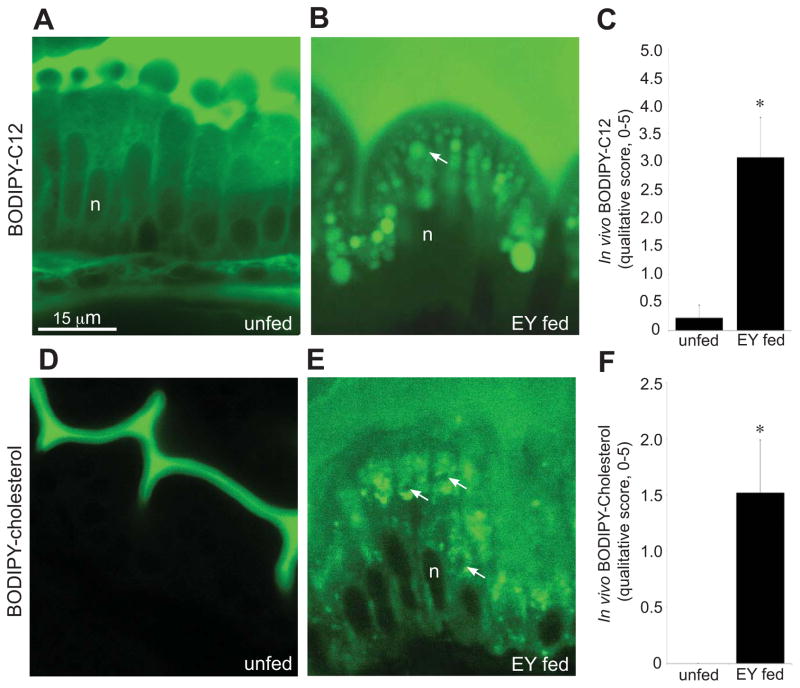Figure 2. Larvae fed a high-fat meal containing BODIPY-lipid analogs exhibit robust and discrete subcellular fluorescence within enterocytes.
(A–D) Confocal images (63X) of live ENTs treated with different dietary conditions and labeled with either BODIPY-C12 or BODIPY-cholesterol.
(A) ENTs are diffusely labeled when BODIPY-C12 is supplied to unfed larvae.
(B) BODIPY-C12 labels large spherical lipid droplets (arrow) when added to a high-fat diet (5% chicken egg yolk in EM).
(C) BODIPY-C12 labeling of ENTs is enhanced in the presence of food. Plotted are mean+/−SE from 3 independent experiments. Images (as in A and B) were blindly scored for cytoplasmic fluorescence on a 5-point qualitative scale, where 5 represents strong and abundant signal and 0 represents no signal. Data were analyzed using two-tailed t-test for equality of means. * p < 0.05.
(D) ENTs are not labeled when BODIPY-cholesterol is supplied to unfed larvae.
(E) When added to a high-fat meal, BODIPY-cholesterol reveals a cholesterol-bearing compartment distinct from lipid droplets (compare to B). Arrows indicate negatively stained lipid droplets.
(F) BODIPY-cholesterol labeling of ENTs requires the presence of food. Plotted are mean+/−SE from 3 independent experiments. Images (as in D and E) were blindly scored for cytoplasmic fluorescence on a 5-point qualitative scale, where 5 represents strong and abundant signal and 0 represents no signal. Data were analyzed using two-tailed t-test for equality of means. * p < 0.05.
Abbreviations: n, nucleus; EY, chicken egg yolk.
See also Figures S2 and S3.

